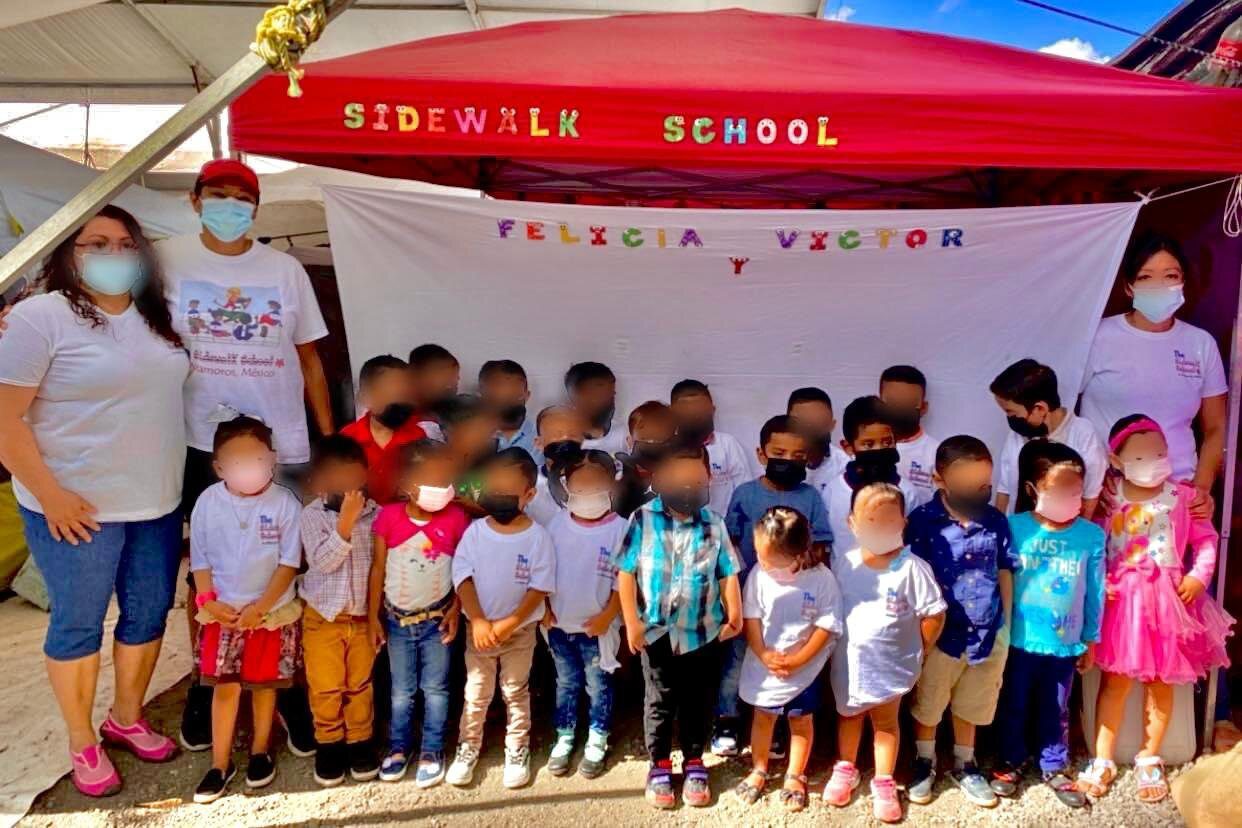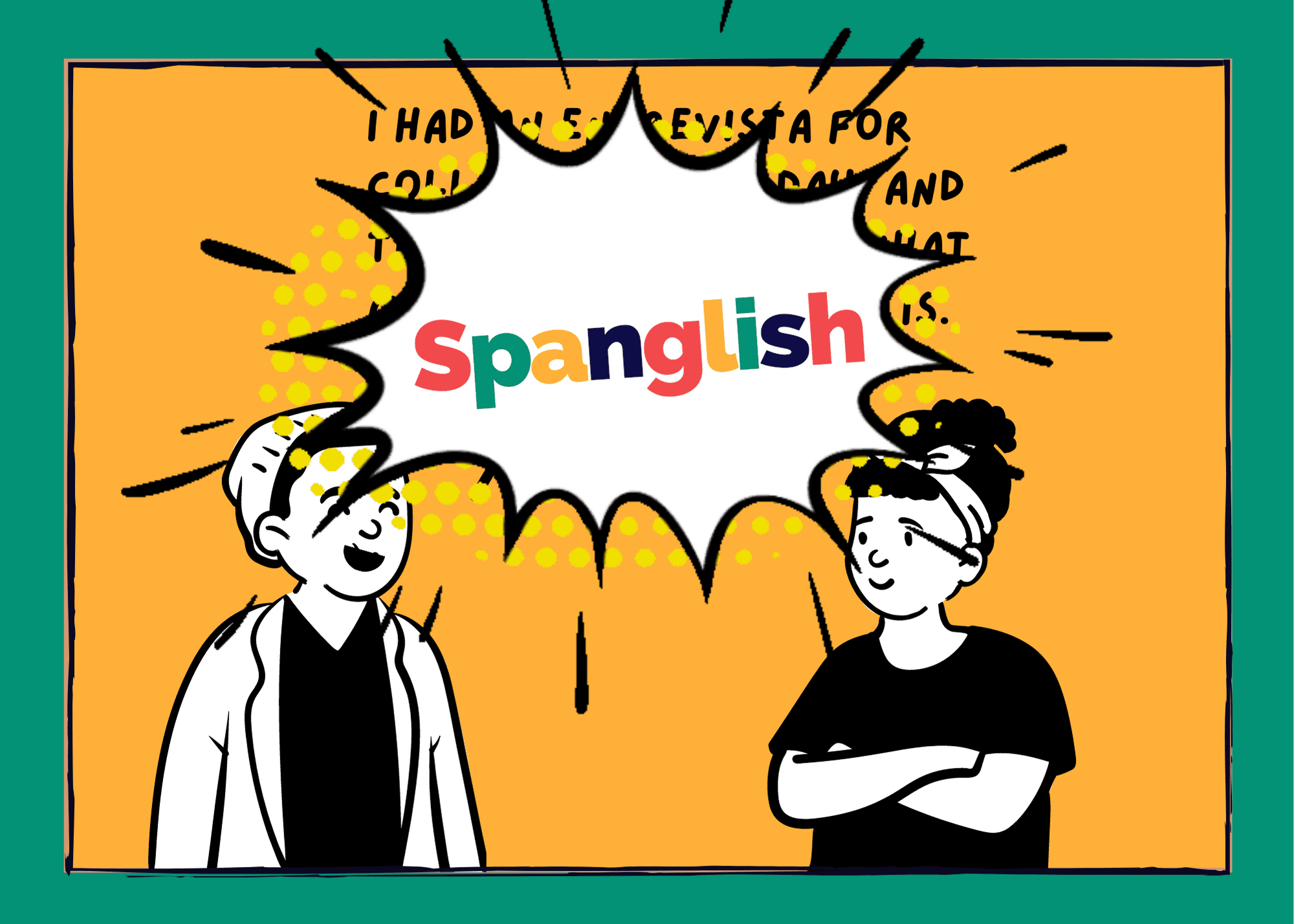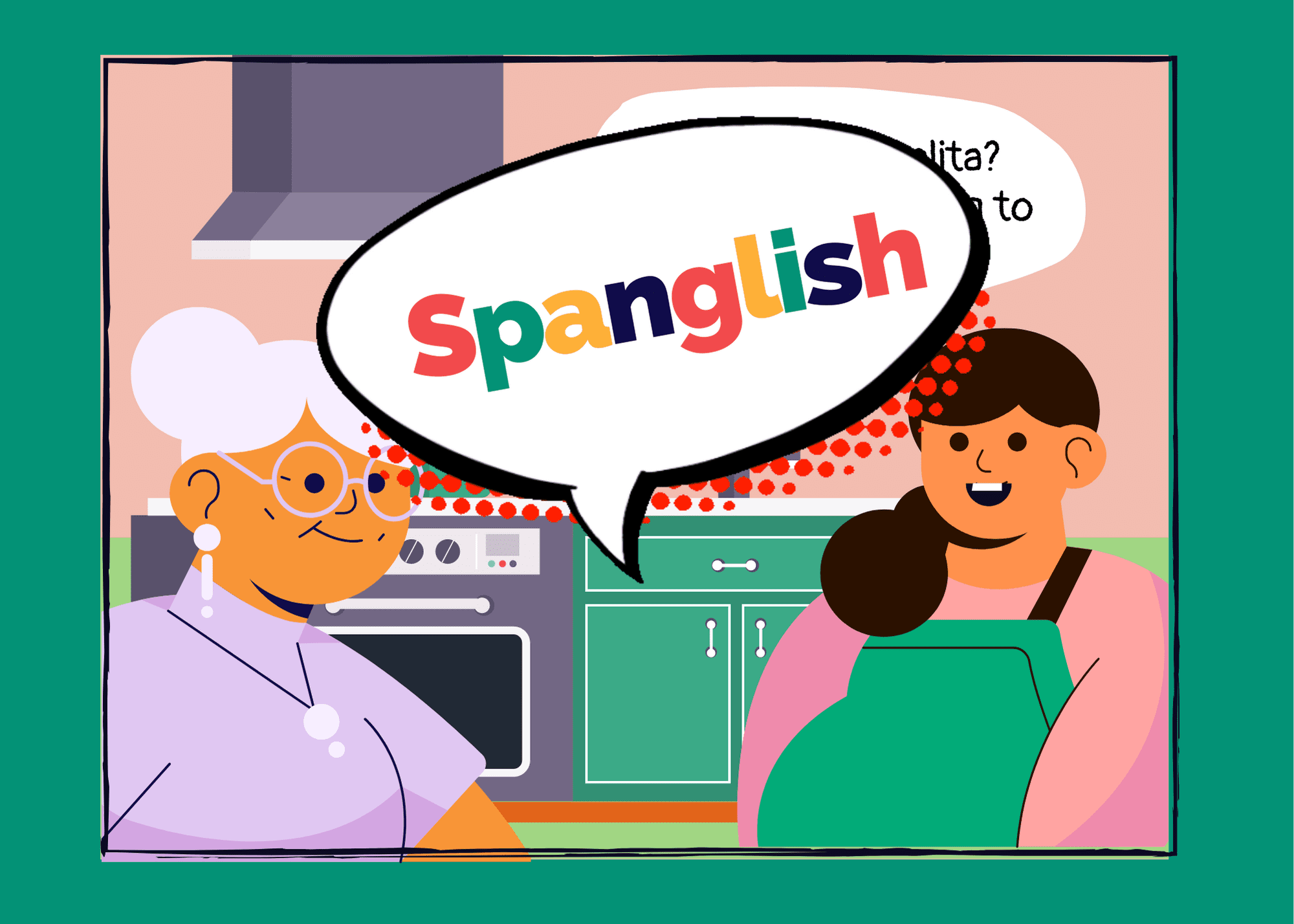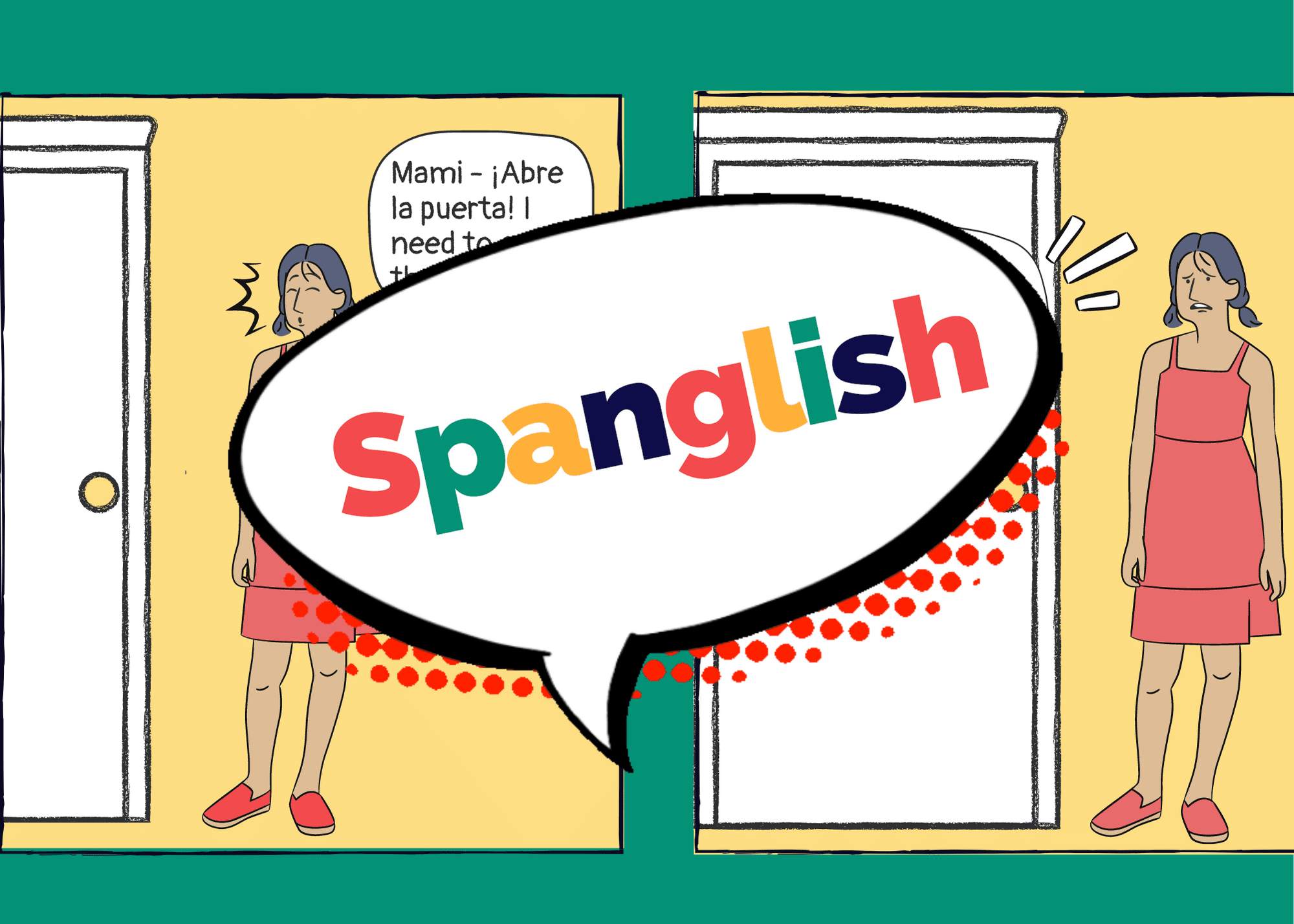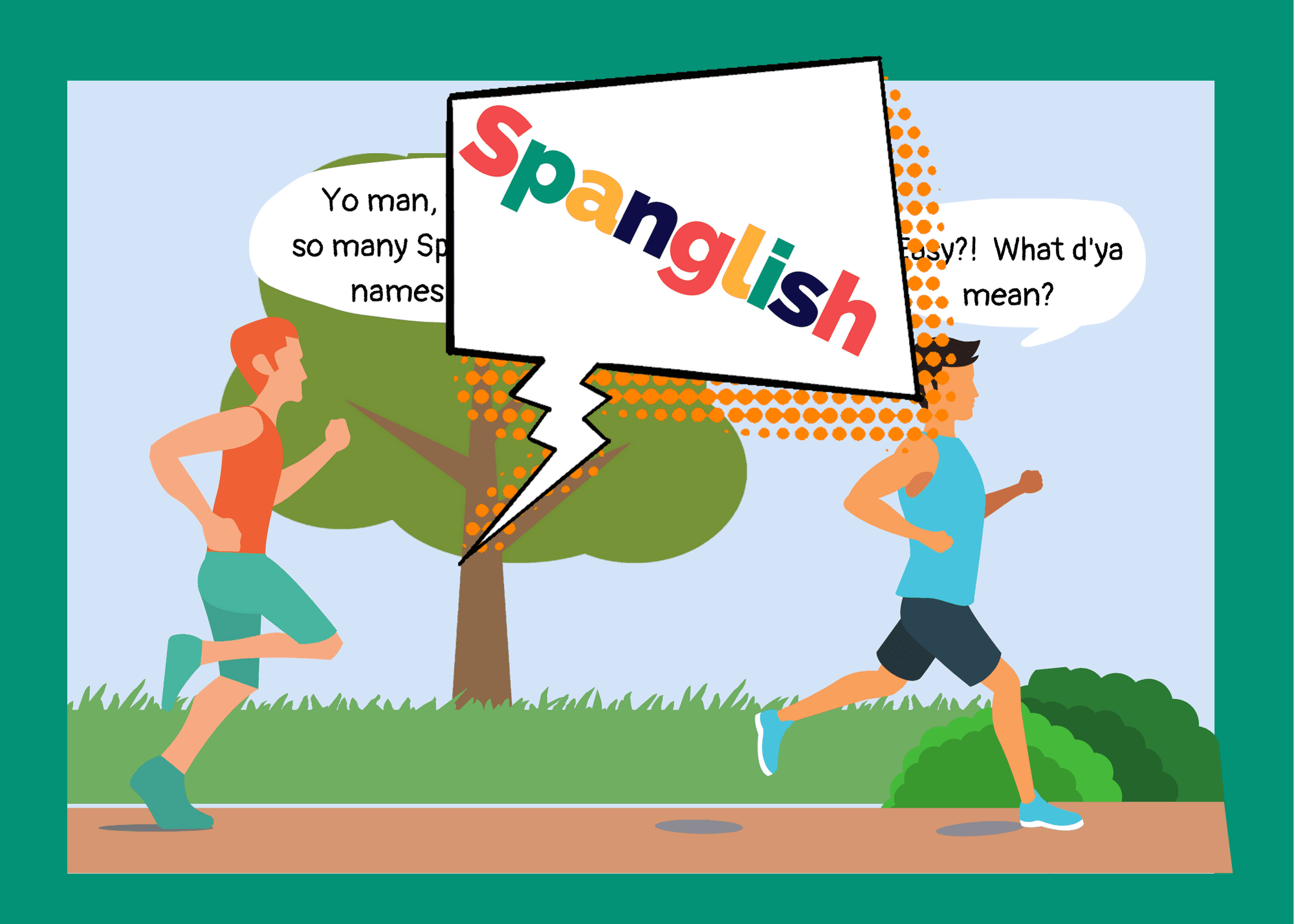When Your School Is a Sidewalk
A student describes her experience teaching children living in a refugee camp at the U.S.-Mexico border.
By Kaeya Patel
I log on to Zoom and see a dozen bright young faces looking back at me through my computer screen. The children are seated around folding tables under a tent. In unison, they greet me: “¡Hola, maestra!” I respond, “¡Hola, niños! Hoy vamos a aprender a dibujar un zorro.”
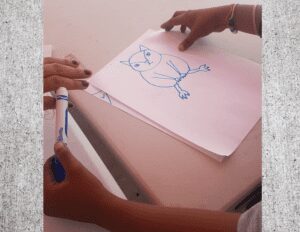
During my senior year in high school, I had the opportunity to volunteer “remotely” for The Sidewalk School as an art teacher from my home in Washington D.C. The Sidewalk School is a non-profit organization that provides education and other support services for children living in Tent City, a makeshift refugee camp in Matamoros, Mexico, a town on the border with the U.S. At any given time, there can be hundreds of people from all over Latin America and the Caribbean – El Salvador, Guatemala, Mexico, Cuba, Haiti – crowded into the crime-ridden Rio Grande border area for extended periods with little or no basic services.

I was not a typical volunteer; most of the other teachers are also migrants or asylum seekers who are employed by The Sidewalk School to provide classes in a range of subjects including math, science, and English. Both the students and the teachers benefit from this ingenious arrangement. The students have the opportunity to continue their education instead of languishing in the camps, and their teachers earn a small salary and gain valuable work experience, as well as a sense of purpose and community.
The Sidewalk School was founded by Felicia Rangel-Samponaro with the help of Victor Cavavos, a fellow volunteer. Ms. Rangel-Samponaro, who was once a teacher in Houston, Texas, witnessed the border crisis firsthand and became determined to help make a difference. She used her life savings to start The Sidewalk School and keep it afloat until the organization was able to solicit sufficient donations and grant dollars. In addition to providing education and employment, The Sidewalk School also offers food assistance, medical care, and housing.
I became interested in helping at the Mexican border after volunteering at a respite center for legal immigrants in McAllen, Texas, in 2019. I found out about the Sidewalk School through social media and contacted Ms. Rangel-Samponaro to ask if I could teach art classes virtually. My class size varied from week to week, anywhere between five and 15 students. I used a camera, which I connected to my computer, to give the class a bird’s-eye view of my drawing technique and make it easier for the kids to follow along. I took Spanish classes in school and volunteering definitely improved my ability to speak the language, but there are times when I still struggled to find the right words. The children were always patient with me, and their focus and interest despite their terrible circumstances never failed to inspire me. I would end each lesson with my favorite part – a “show and tell” of their completed pieces – and saw the satisfaction in the children’s faces as they displayed their finished work.

Immigration is a complicated issue, and reasonable people can have different views on how best to deal with the many people who seek to enter the U.S. each year. However, it is important to remember that the children at the border are not responsible for their situation. Hopefully, by supporting The Sidewalk School and other similar organizations, we can help improve the lives – and futures – of these innocent and vulnerable children.
Most popular
-
 Student Life35 Top Science Competitions for High School StudentsJanuary 31
Student Life35 Top Science Competitions for High School StudentsJanuary 31 -
 Info / InspirationVoto Para La Mujer Quarter is a Major “Change”!July 29
Info / InspirationVoto Para La Mujer Quarter is a Major “Change”!July 29 -
 Student Life35+ High School Internships in the Bay AreaJanuary 22
Student Life35+ High School Internships in the Bay AreaJanuary 22 -
 Student Life90+ Best Writing Competitions for High School StudentsApril 13
Student Life90+ Best Writing Competitions for High School StudentsApril 13 -
 CultureA Smashing Success: The Surprising History of the Piñata in Latino/x CultureSeptember 27
CultureA Smashing Success: The Surprising History of the Piñata in Latino/x CultureSeptember 27

